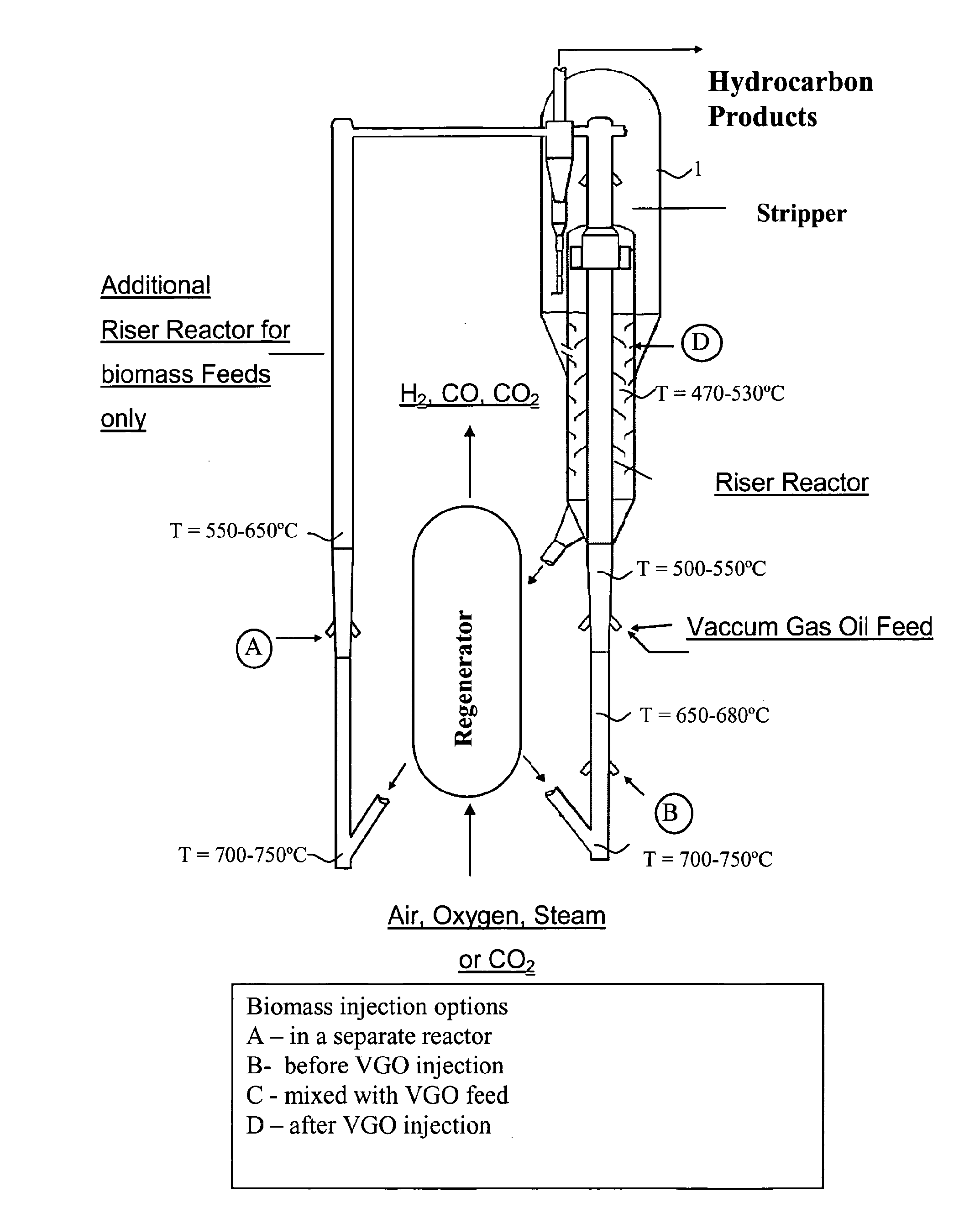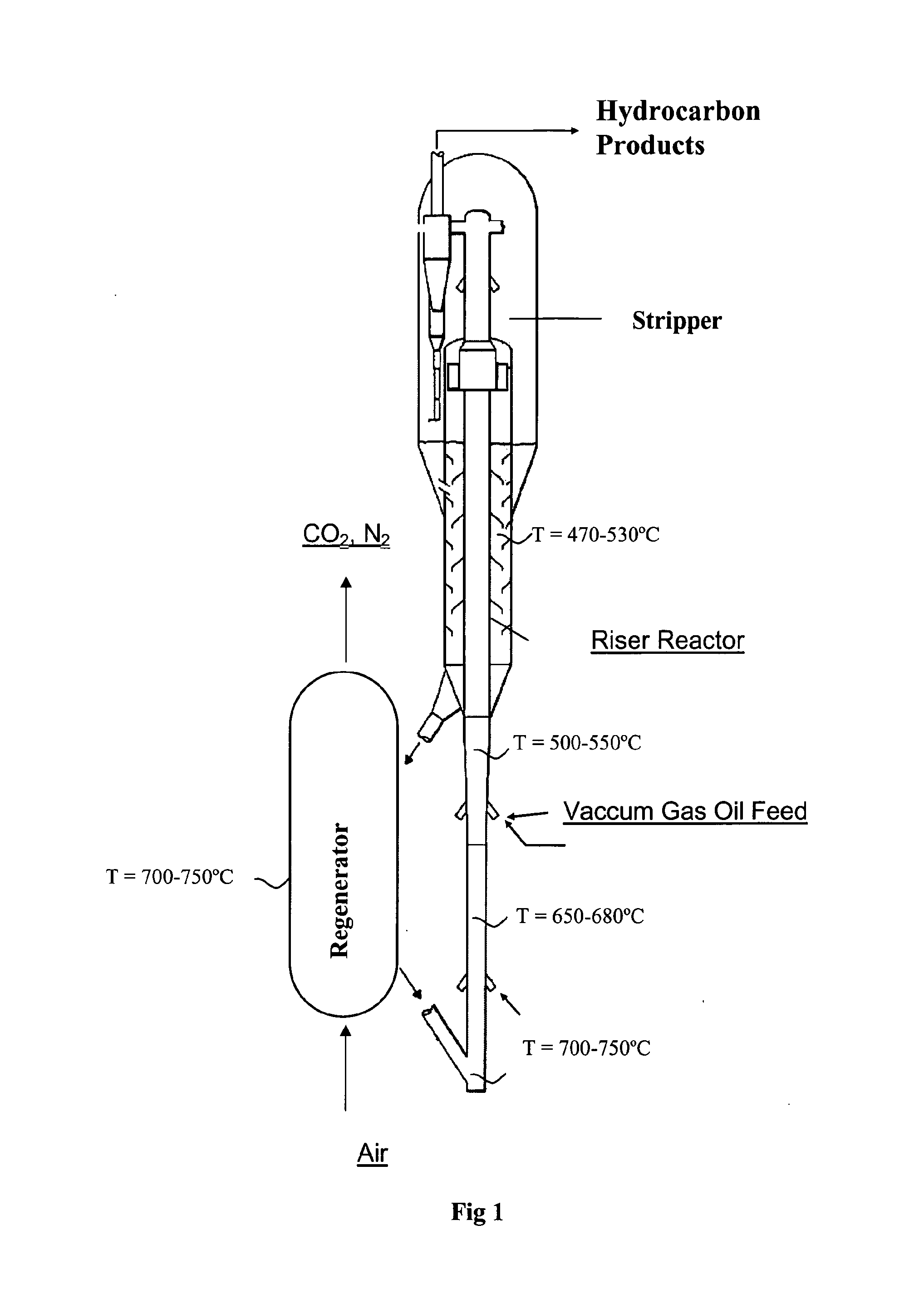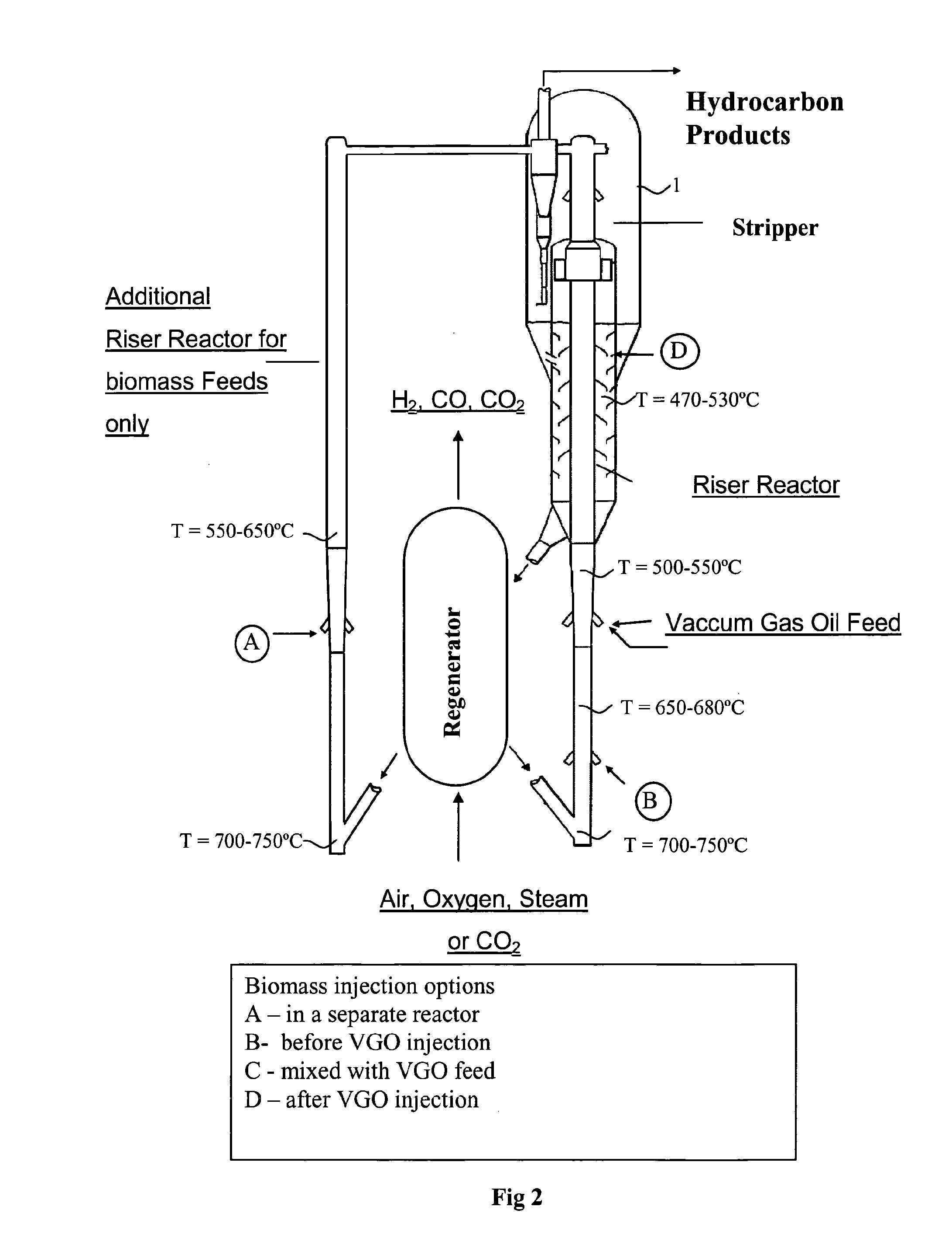Fluid catalytic cracking of oxygenated compounds
a technology of oxygenated compounds and flue gases, which is applied in the direction of biofuels, fuels, waste based fuels, etc., can solve the problems of thermal instability of bio-oils, needing to be upgraded, and the price of glycerol has already dropped by almost hal
- Summary
- Abstract
- Description
- Claims
- Application Information
AI Technical Summary
Problems solved by technology
Method used
Image
Examples
example 1
[0052]Six different catalysts were tested for catalytic cracking of an aqueous 50 wt % glycerol as shown in FIGS. 5-7, including FCC1, ECat, Al2O3, Y, ZSM-5, and SiC. The products for the FCC1 catalyst include coke, gases, and liquid products. Between 30-50% of the carbon in the glycerol feed was converted into coke for the FCC1 catalyst (FIG. 5). The coke yield increased as the conversion increased, while the aromatic yield decreased as the conversion increased for the FCC1 catalyst. This may be due to formation of coke from the aromatic compounds. The gas phase yields for FCC1 decreased from CO>propylene>CO2>ethylene>butene>methane>ethane>propane>n-butane (FIG. 6). Alkanes and olefins were produced together with aromatics and coke, which indicates that hydrogen transfer reactions have a strong impact on the final product distribution. The C3 and C4 olefin-to-paraffin ratio for FCC1 was greater than 10 as shown in FIG. 7.
[0053]Petroleum-derived feeds typically contain metal impurit...
example 2
[0058]FIGS. 8-10 show the effect of temperature on the catalytic cracking of glycerol with ZSM5. The activity for cracking of glycerol increased with temperature, as shown in FIG. 8. As the temperature increased, the coke yield significantly decreased (FIG. 8), and the CO, H2, and ethylene yields increased (FIG. 9). Similar temperature effects were observed for catalytic cracking of glycerol with FCC1. At 500° C. the coke yield increased linearly with conversion, whereas at 600 and 700° C. the coke yield did not increase with conversion. The aromatics at 500° C. also increased linearly with conversion, whereas at 600 and 700° C. they decreased linearly with conversion, probably as the result of a lower contribution of olefin oligomerization and hydrogen transfer (both exothermic reactions) when the reaction temperature was increased. The gas yield increased with both conversion and temperature.
example 3
[0059]To test the catalytic cracking of other biomass-derived oxygenated hydrocarbon compounds we used sorbitol as a feed, with ZSM5 and SiC as catalysts. Sorbitol has a lower H / Ceff ratio than glycerol. FIGS. 11-12 show the results of aqueous solutions of 50 wt % sorbitol and 50 wt % glycerol feeds in the MAT reactor. The thermal stability of glycerol is greater than that of sorbitol. However, surprisingly, sorbitol and glycerol had similar coke, gas and aromatic yields even though they have different H / Ceff ratios.
[0060]The gas phase yields for glycerol and sorbitol are shown in FIG. 12. The main differences between the two feeds are that sorbitol had a higher CO yield than glycerol feeds with the ZSM-5 catalyst. The CO and CO2 yield is also higher for the thermal sorbitol reaction with SiC as the “catalyst” (1-2% CO yield at conversions 4-18) than for glycerol (0.3-0.5% CO yield at conversions 2-8%). More hydrogen is required to convert sorbitol into a paraffin or olefin than is ...
PUM
| Property | Measurement | Unit |
|---|---|---|
| temperature | aaaaa | aaaaa |
| contact time | aaaaa | aaaaa |
| temperatures | aaaaa | aaaaa |
Abstract
Description
Claims
Application Information
 Login to View More
Login to View More - R&D
- Intellectual Property
- Life Sciences
- Materials
- Tech Scout
- Unparalleled Data Quality
- Higher Quality Content
- 60% Fewer Hallucinations
Browse by: Latest US Patents, China's latest patents, Technical Efficacy Thesaurus, Application Domain, Technology Topic, Popular Technical Reports.
© 2025 PatSnap. All rights reserved.Legal|Privacy policy|Modern Slavery Act Transparency Statement|Sitemap|About US| Contact US: help@patsnap.com



